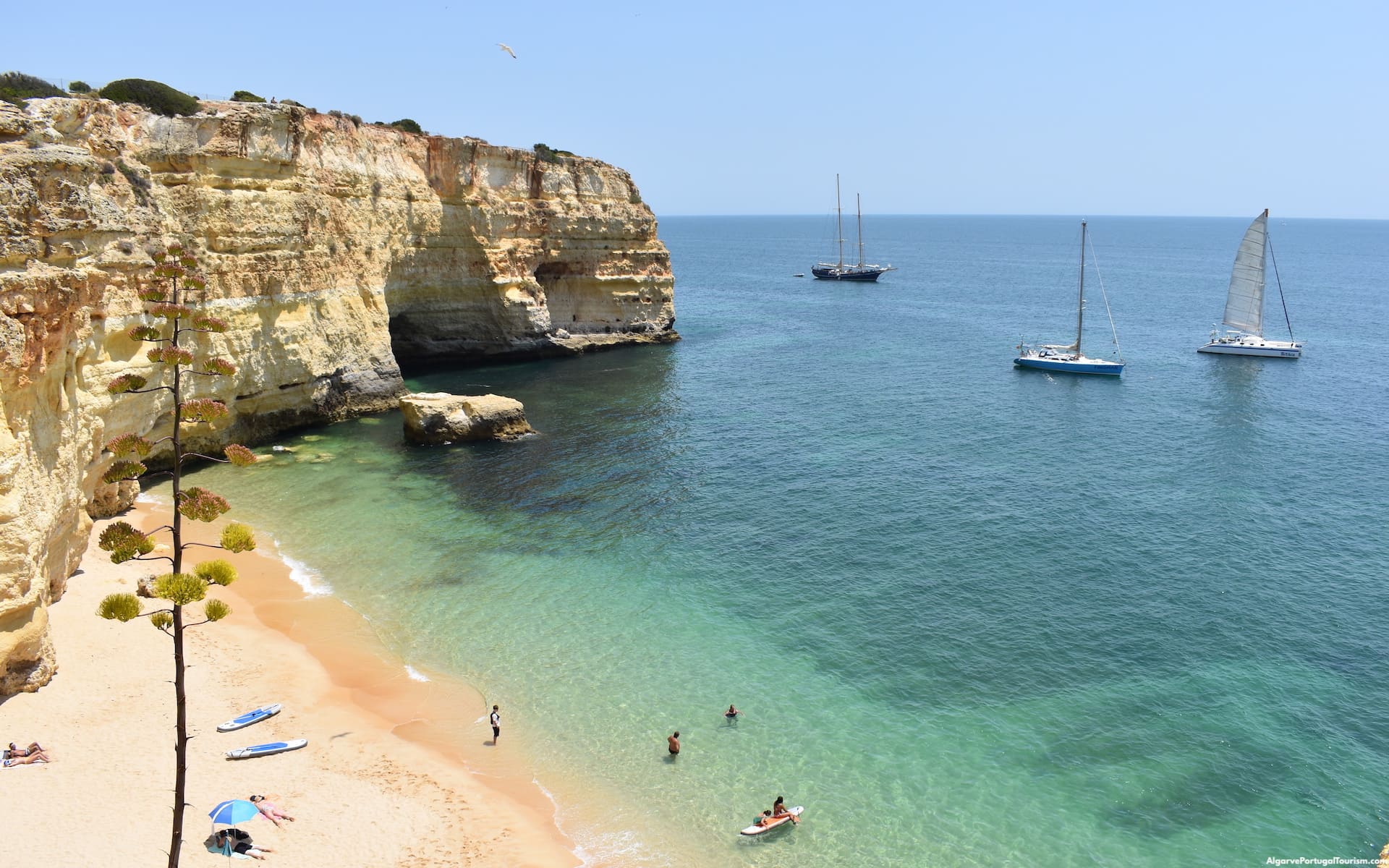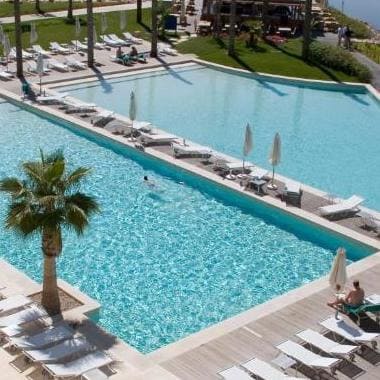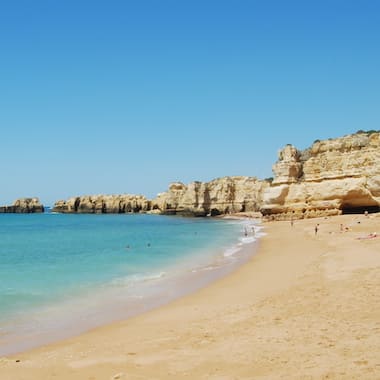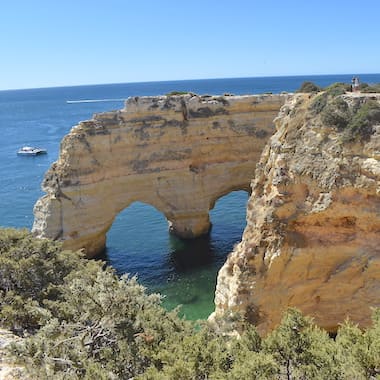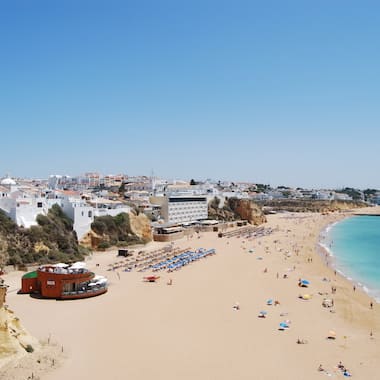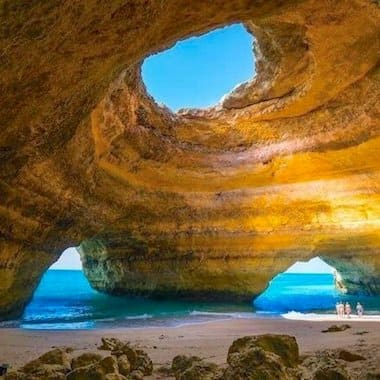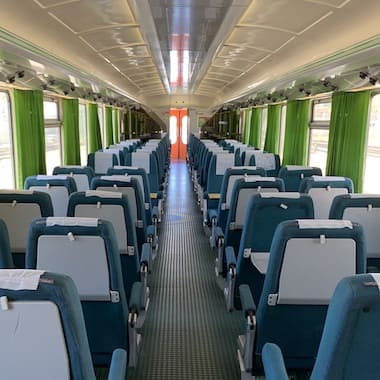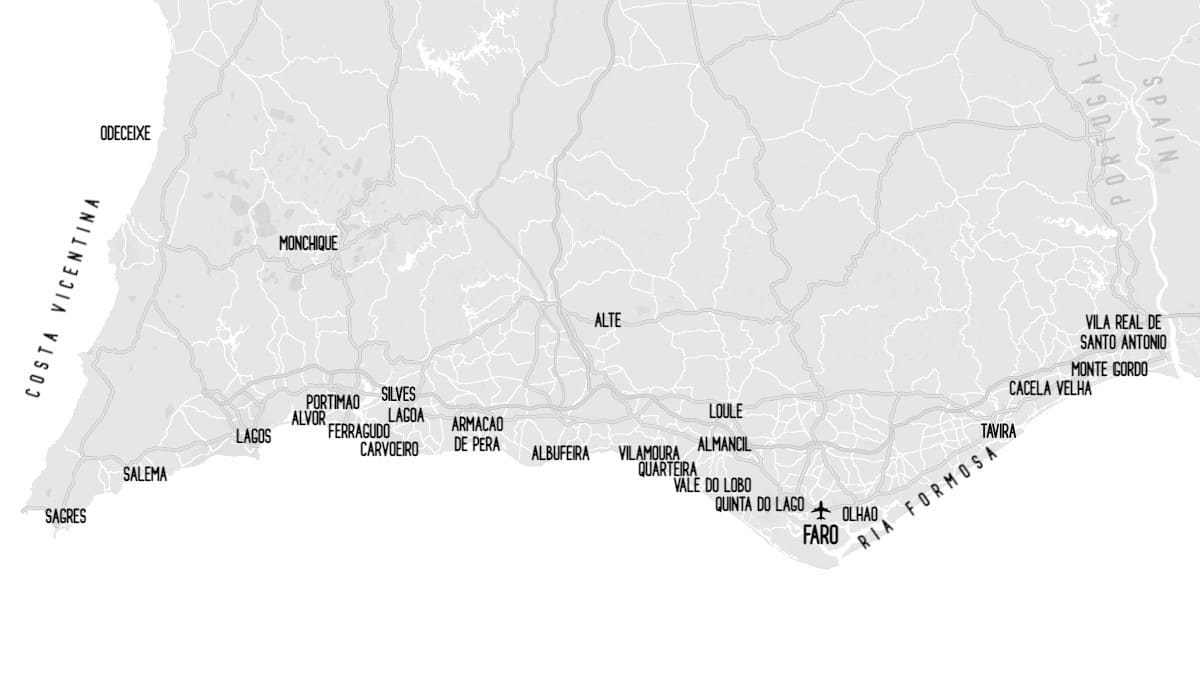Which Part of Algarve is Best?
The Algarve region could be divided into three sub-regions -- the east, central, and western Algarve. Each offers a different experience, so where you go depends on what type of holiday you want to have:
Central Algarve
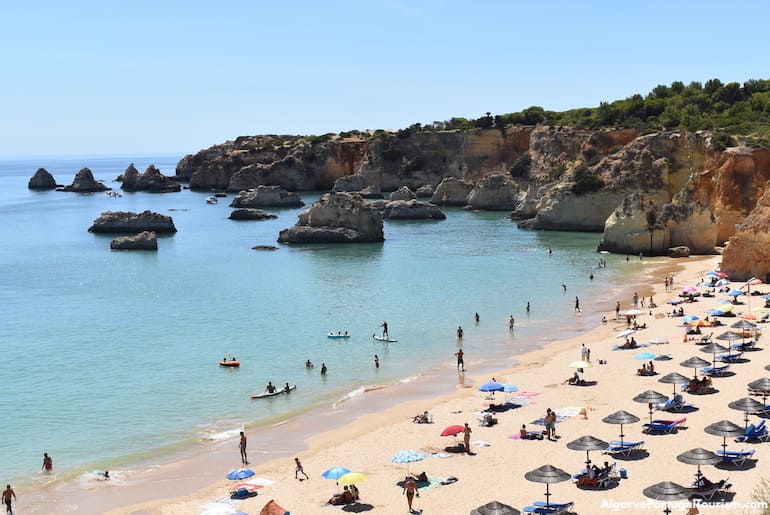
This is where tourism in Algarve was born in the 1960s and the favorite area of British, German and Dutch tourists. It goes from Faro to Portimão and is the most developed area. Some former fishing villages are now major resorts with high-rise apartment buildings and hotels, looking more like Miami or Costa del Sol in some parts (such as Praia da Rocha and Quarteira). However, there are some extraordinary beaches and caves, including many of the region’s most beautiful (by Lagoa, Carvoeiro and Alvor), some crowded, others secret, only accessible by boat and waiting to be discovered. Vestiges of a more traditional Algarve can be found in narrow whitewashed streets and on quiet coves. This is where you also find the most luxurious resorts (Quinta do Lago, Vale do Lobo and Vilamoura), the water parks and the liveliest nightlife (in Albufeira). Inland is the historic town of Silves, with the Algarve’s best-preserved castle. Due to the variety of attractions for all budgets, it’s the most visited part of the region.
Eastern Algarve
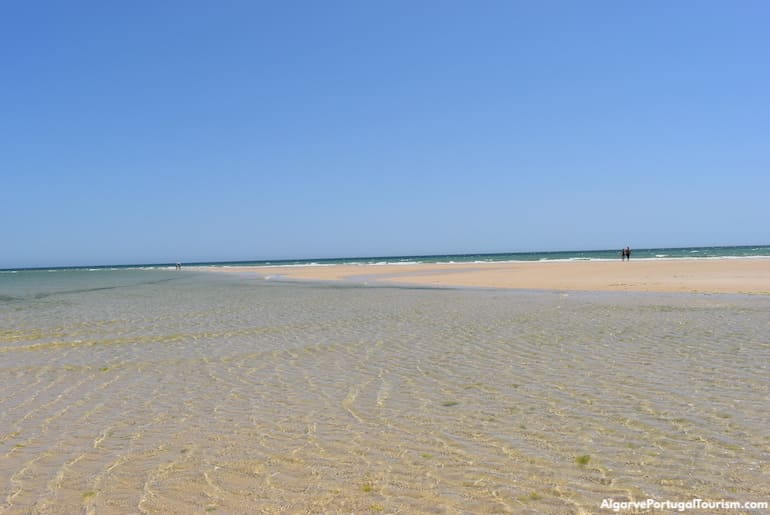
It goes from the Spanish border to the main city and regional capital (Faro, where there’s the international airport), and is mostly visited by Portuguese and Spanish tourists. The coastline says goodbye to caves and cliffs and hello to miles of dunes, lagoons, marshes and a series of sandy islands in the Ria Formosa Natural Park, home to some of the region’s best and most spacious beaches. It’s quieter than the central region and has charming small towns and villages like Tavira, Cacela Velha, Castro Marim and the fishing port of Olhão. These preserve traditional architecture of Roman and Moorish influence and are more typically Mediterranean when it comes to climate and water temperature.
Western Algarve
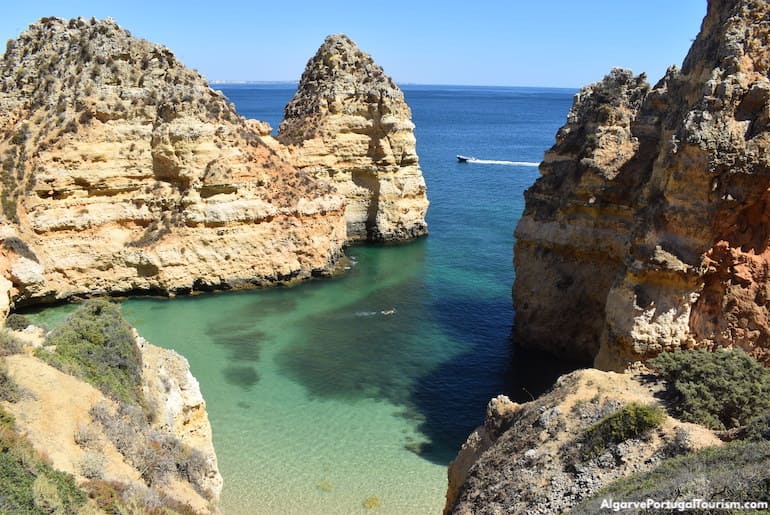
From Lagos to Sagres are small fishing villages and scenic beaches with golden rock formations. In Sagres the landscape changes, with soaring cliffs hiding breathtaking beaches for surfing and naturism. This west coast is the Costa Vicentina, considered the wildest in Europe. While Lagos has become popular with young tourists for its photogenic beaches, Sagres and Costa Vicentina still enjoy relative obscurity and remain the almost exclusive destination of surfers, hippies and naturists.
Algarve Tourism - Frequently-Asked Questions
When is the best time to visit Algarve?
Algarve’s Mediterranean and Atlantic climate gives it pleasant weather throughout the year, with warmer and sunnier winters than elsewhere in Europe, but it’s never warm enough for the beach between November and March. However, temperatures and the sea are just fine for golfers and surfers in spring and autumn. The height of the tourist season is July and August (especially August, when families from around Portugal descend to the southern shores), so that’s when you find the beaches at their most crowded and prices at their highest. The best time to go is therefore late June or early September, especially for couples who prefer child-free environments at the beaches and hotels. The weather is suitable for sunbathing from late April to early October. The driest months are July and August, with an average of just one day of rainfall in July and zero days in August. June averages two rainy days and September has about five. There are twelve daily sunshine hours from June to August. High temperatures average 28C (82F) in June, 33C (91F) in July and 32C (90F) in August.
What is Algarve known for?
Algarve is known as one of the sunniest regions in Europe and with some of the continent’s finest beaches, extraordinary rock formations, amazing caves and golden cliffs. It is also one of the most beautiful places in the world! It was first settled by the Phoenicians, Greeks, Carthagianians, and later by the Visigoths, but it was the Romans and the Moors who most left their mark. There are traces of Roman villas and mosaics around the region, while the many almond, fig and orange trees; latticed chimneys and white domed buildings reflect the Moorish heritage. When the kingdom of Portugal was founded in the 12th century in northern Iberia, it expanded south and conquered “Al Gharb” (“the West”). It was officially made part of Portugal in 1267. Two centuries later it played a major role in the Age of Discovery, when Prince Henry the Navigator established a pioneering navigation school in Lagos and Sagres, where ships were built and expeditions launched. The most visited monument in the region is the prince’s fortress in Sagres, which is a European Heritage Site for its significant role in European history and culture.
What is the most beautiful town in Algarve?
Most people will agree that Tavira is the best-preserved Algarve town and therefore the most beautiful. Others prefer Lagos, since its coastline is stunning and its beaches some of the most photogenic in the region. Carvoeiro is the winner of the smaller towns, serving as a gateway to some of the best and most famous beaches.
How many days should I stay in Algarve?
While many people do head to Algarve for just a weekend, it’s a destination for an extended holiday in the sun. The average length of a trip to Algarve is two weeks. Many people stay for a week, but there are families that stay the entire month of July or August. If you just want to get to know the region, five to seven days will be enough to experience the highlights, including the more famous caves, beaches, islands and monuments. In a grand tour, stopping at the main destinations, we recommend two days in Faro (including a trip to one or more of the islands), two days in Albufeira (beach-hopping), three days in Tavira (including a trip to Cacela Velha), two days in Carvoeiro (for the famous caves and beaches nearby), two days in Lagos, and two days in Sagres (which should include the beaches of Costa Vicentina).
Is Algarve Expensive?
Algarve has always been known as a budget-friendly destination, but that of course depends on where you stay and dine. There are luxury resorts and Michelin-starred restaurants, but also budget apartments and hotels for families, and restaurants serving good-value meals of fresh fish and other local delicacies. It’s certainly cheaper than St. Tropez, Sardinia, Ibiza, Mallorca and the other Balearic islands, or the Greek islands. In fact, it consistently ranks at the top of best-value beach destinations for travelers from the UK and around Europe. It’s considered the most affordable destination for summer holidays in the Eurozone, with prices about 25% lower than on the Costa del Sol, across the border in Spain.
Is Algarve Safe?
Portugal is a very safe country (it consistently ranks in the top 5 in the annual list of world’s most peaceful countries), but, naturally, in a major tourist destination like Algarve, unfortunate episodes do occur. Violent crime is very rare and the vast majority of tourists have a problem-free holiday, but always use common sense as you would back home. Always be aware of petty crime like pickpocketing in crowded places and never leave valuables in your car. It’s also a good idea to head back to your hotel as soon as you spot rowdy tourists and drunken behavior in nightlife areas, where trouble sometimes arises.
How to Go to Algarve
Algarve can be reached by regular flights from most major European capitals, and low-cost airlines also offer seasonal services from smaller cities. The international airport in Algarve is in Faro, which is roughly at the center of the region. There are also 30-minute flights and trains from Lisbon (the slower Intercidades train service takes 3 hours and 30 minutes and the faster Alfa Pendular takes 3 hours).
Do you need a car in Algarve?
You don’t need a car in Algarve if you stay in the major towns of Albufeira, Lagos, Faro, Vilamoura, and Tavira, where beaches are within walking distance and there are good public transportation links (trains, buses or ferries). However, to explore some of the best beaches and the smaller towns, you do need a car, have to rely on taxis or Uber (which will increase the cost of your holiday significantly), or have to plan your itinerary very carefully and use the often very infrequent buses.
Is English spoken in Algarve?
You’ll find that Portugal is the southern European country where English is better and more widely spoken, especially in the cities of Lisbon and Porto, and in Algarve. The British make up the biggest percentage of tourists in the region, so you can expect no problems communicating in English at hotels, most restaurants and shops.
Algarve Tourism - Quick Tips
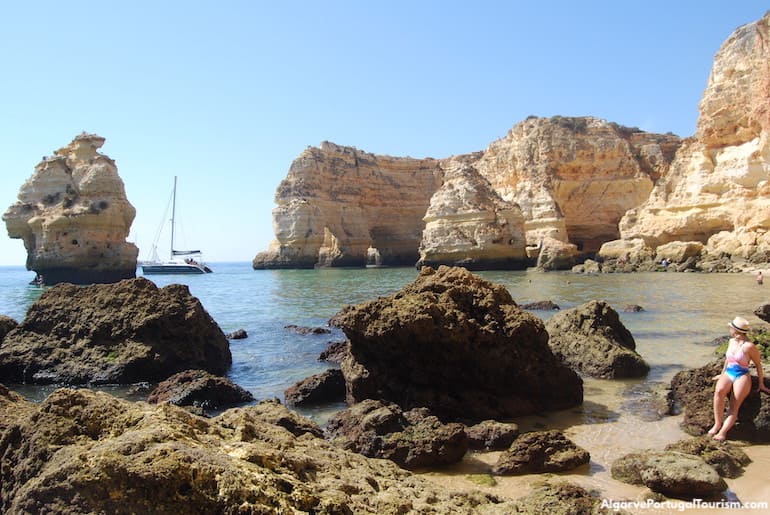
(See links to the different destinations at the bottom of this page)
Best Large Resort Towns - Albufeira, Lagos, Vilamoura
Best Small Resort Towns - Alvor, Carvoeiro
Best Small Villages - Burgau, Salema
Best Destinations for Families - Albufeira, Praia da Luz
Best Destinations for Young Tourists - Albufeira, Lagos, Praia da Rocha
Best Destinations for Mature Tourists - Albufeira, Alvor, Carvoeiro, Tavira
Best Destinations for Surfing - Costa Vicentina, Sagres
Nightlife Destinations - Albufeira (Praia da Oura), Praia da Rocha, Vilamoura
Luxury Resorts - Quinta do Lago, Vale do Lobo
Low-Cost Destinations - Armação de Pêra, Quarteira, Monte Gordo
Best Destinations for Culture and History - Faro, Lagos, Tavira
Golf Destinations - Praia dos Salgados (Albufeira), Quinta do Lago, Vale do Lobo, Vilamoura
Winter Destinations - Faro, Tavira
Official Algarve Tourism Office
Everything you need to plan your visit to Algarve is on this website. It offers complete and entirely independent information from locals and travel experts, not sponsored by or associated with any local institution or organization. However, if you still have any questions when you arrive, pass by the official tourist office at Faro airport. If you’re not arriving by plane, you’ll find tourist offices in all of the region’s main towns. They’re usually found in or around the main squares or pedestrian streets.
